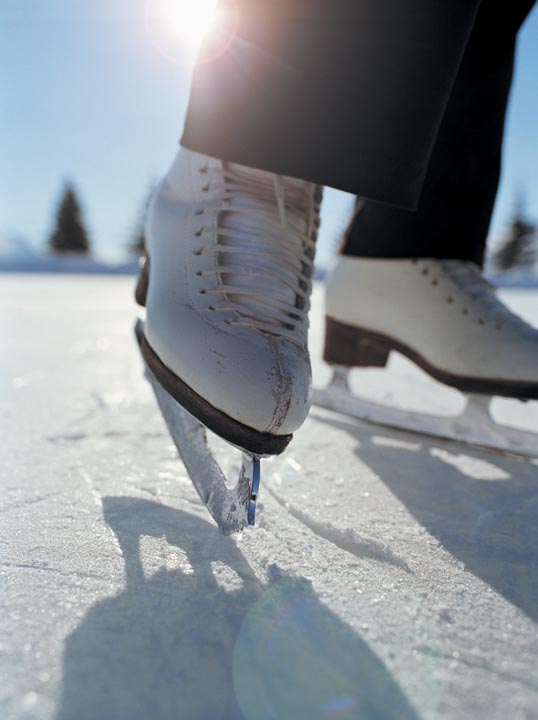So You Want to Learn How to Skate

So you love ice skating. You love the feel and the smell of the ice rink. You love to watch figure skating on T.V. and you have tickets to this year’s figure skating championships at the Spokane Arena. But do YOU know how to skate your own self around the rink? If not, but you’re thinking it may be time, there are a few things you probably should know before taking that first step.
Good skates are important. Rentals are okay (depending on the rink) but sometimes their support structure is weakened from wear and the blades may be dull. However, trying the sport out first before investing in your own pair is probably the best thing to do. In either case, check for these things in order to ensure proper fit: (1) There should be no extra room in your boot, however your toes should be able to wiggle, (2) Your heel should not slide up or down once your boots are laced (if it does, expect to get a whopper of a blister!), and (3) Your ankles should feel snug and secure—this is the most important area of support to help keep you up!
Skate with a friend. Skating with a friend will help you to relax on the ice, thus making the whole experience easier and more fun!
Wear the appropriate clothing. Your clothing will depend on where you are planning to skate. Indoor arenas will be between 50 and 60°F. Of course, if you’re going outdoors, check the temperature. Wear clothing that is comfortable and allows you to move, but wear it in layers so you can discard if you get warm. Don't wear thick or bulky socks as they may interfere with the support of your skates and gloves or mittens are a must: Not only will they keep your hands warm, but they will offer protection if/when you fall. Also, a helmet is a good idea for any beginning skater, especially children (Ice is very unforgiving and it’s too easy for them to fall backwards and hit their head).
Balance and relaxing are key on the ice. Find your center of gravity and wherever it is, focus on keeping it there. And relax! I know it may sound hard, especially once you’re actually on the ice, but if you keep these two things in mind, they will feed on each other and help you to stay vertical!
YOU MUST TRUST THE ICE! This may sound silly, but think to yourself, ‘I trust the ice!’ and you will actually find yourself more comfortable. Try it. You’ve nothing to lose (except for your confidence in my advice, which I hope won’t happen!).
Start out trying to walk. Walk around for awhile (on the rubber mats) if you have to. This will help you get use to the feel of the skates and how to manage your ankles, making sure they’re supported well enough. Once you step onto the ice, walking will help you get used to the friction of the ice. If necessary use the wall for support, but don’t let it become a crutch. Instead, hold your arms out at just below shoulder level to learn to balance yourself.
Lean on your weak foot, push with your strong foot. As you’re leaning on your weak foot, push in a diagonal direction outwards with your strong foot, which will propel you forward. Then bring the strong foot back in and repeat the process. When you get comfortable, try to take longer strokes and glide. Bend your knees and again, relax!
Learn how to stop. To stop, place one skate perpendicular behind the other (like an unpside-down “T”) and gently drag it until you come to a halt. When you do this, your balance will be put on the front foot only, so practice skating on one foot to perfect this technique.
Take group or private lessons for faster learning. Coaches are usually very good at seeing exactly what you’re doing right or wrong, giving you tips to accomplish your goals quicker, and building your confidence, which is paramount in becoming good at any sport.
Above all else (well except for safety), HAVE FUN!
Happy Skating!